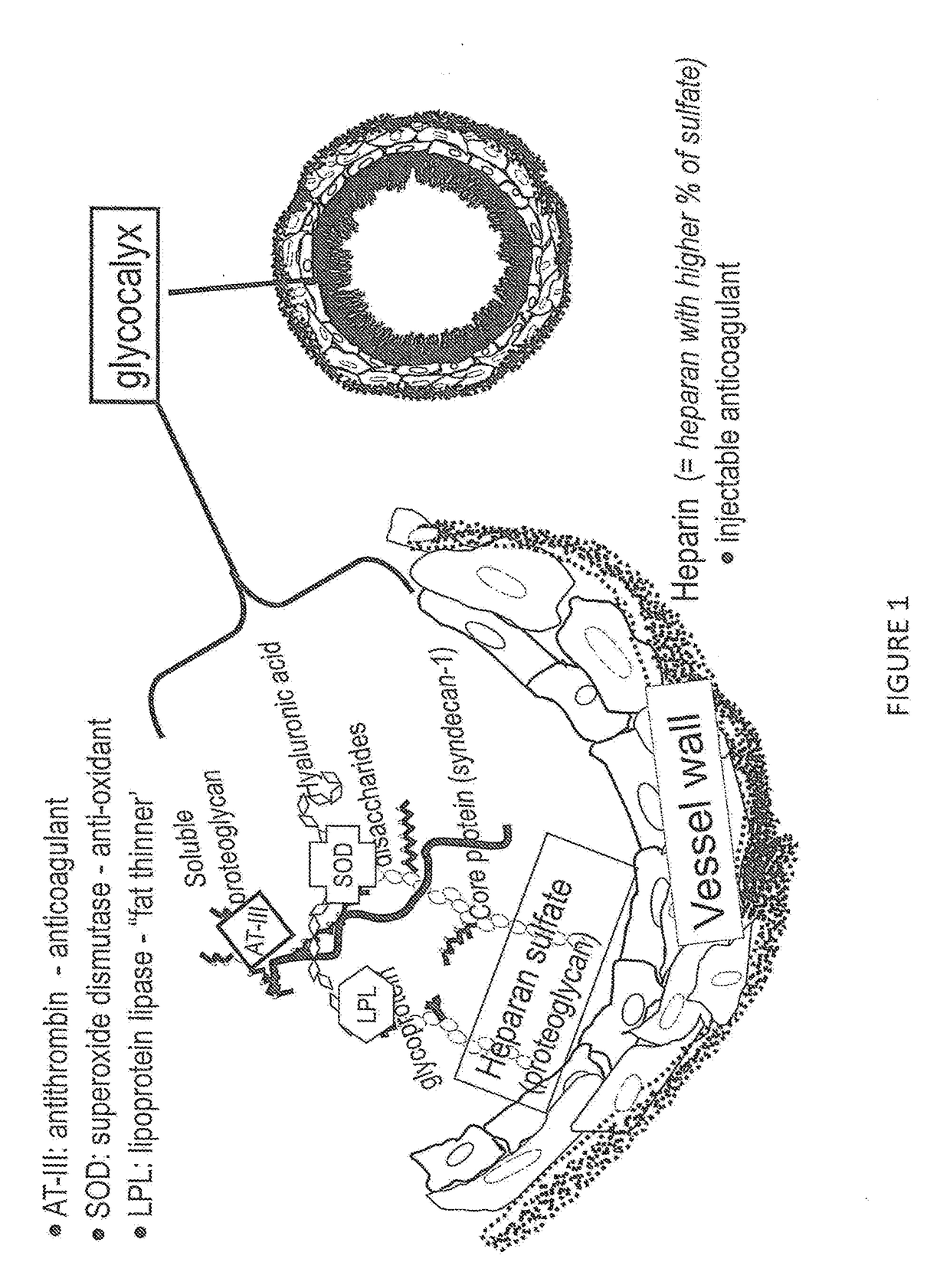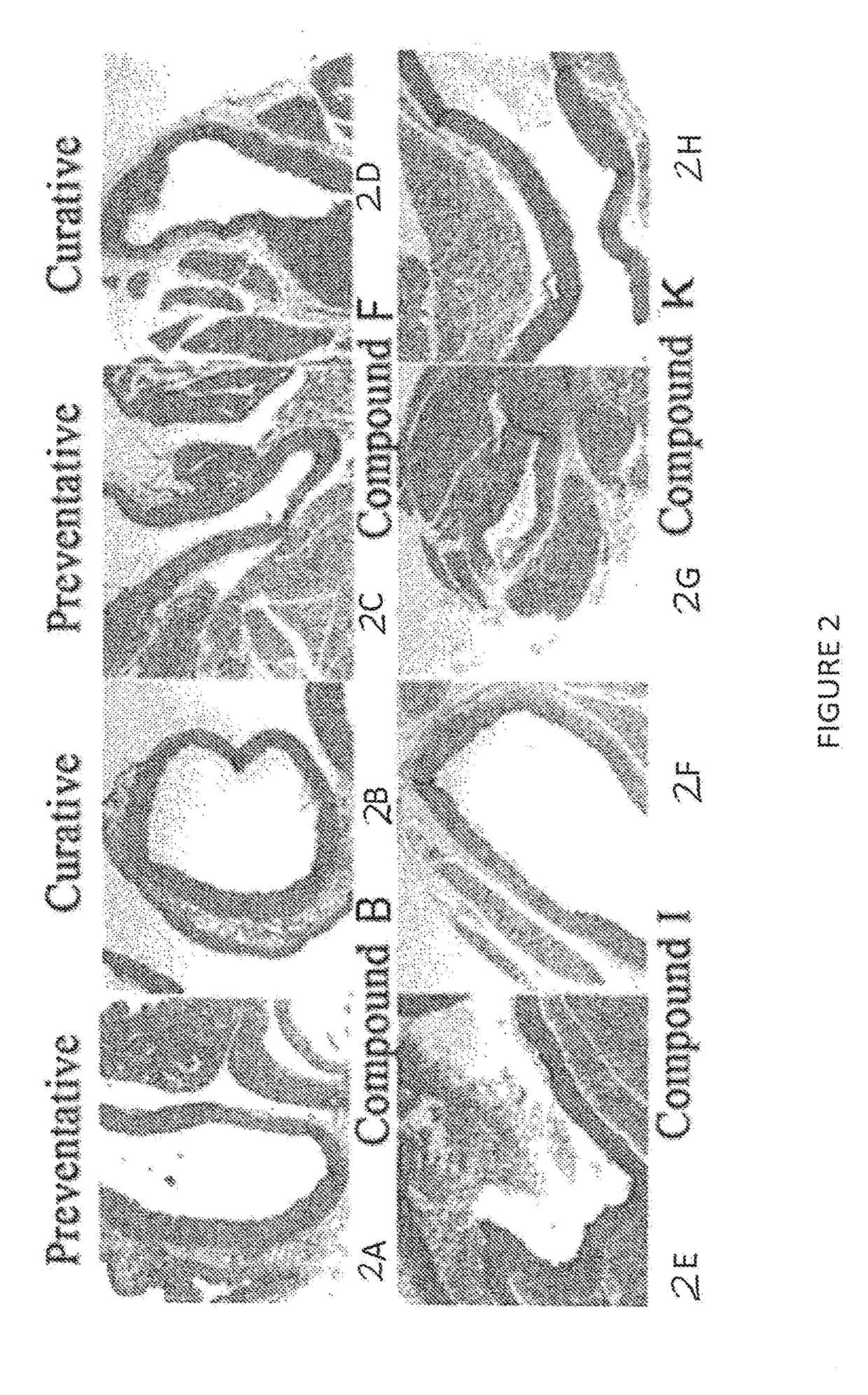Methods and compositions for reversing disruption of the glycocalyx, inflammation, and oxidative damage
a glycocalyx and glycocalyx technology, applied in the field of methods and compositions for treating diseases involving disruption of glycocalyx, inflammation, and oxidative damage, can solve the problems of affecting the function of the underlying cell, affecting the structure and function of the cells, and not recognizing the significance of the structur
- Summary
- Abstract
- Description
- Claims
- Application Information
AI Technical Summary
Benefits of technology
Problems solved by technology
Method used
Image
Examples
Embodiment Construction
[0034]The present invention is generally directed to methods and compositions that restore the glycocalyx. Disruption of the glycocalyx is at the root of many diseases, especially CVD. The compositions of the present invention maintain the integrity of glycocalyx in many different membranes.
[0035]“Disrupting” or “disruption of” the glycocalyx as used herein refers to any process or disease state that affects the glycocalyx such that it is not functioning normally. Disruption can be caused by inflammation or oxidation in the body. Disruption can cause the glycocalyx to thin and lose its component PGs.
[0036]“Inflammation” as used herein refers to a protective response of tissue to injury or destruction in order to eliminate or cordon off any injurious agent and the injured tissue and initiate tissue repair. Inflammation can cause pain, heat, redness, swelling, and loss of function. Inflammatory mediators (cytokines and chemoattractants) can cause shedding of the glycocalyx. Inflammati...
PUM
| Property | Measurement | Unit |
|---|---|---|
| Mass | aaaaa | aaaaa |
| Mass | aaaaa | aaaaa |
| Mass | aaaaa | aaaaa |
Abstract
Description
Claims
Application Information
 Login to View More
Login to View More - R&D
- Intellectual Property
- Life Sciences
- Materials
- Tech Scout
- Unparalleled Data Quality
- Higher Quality Content
- 60% Fewer Hallucinations
Browse by: Latest US Patents, China's latest patents, Technical Efficacy Thesaurus, Application Domain, Technology Topic, Popular Technical Reports.
© 2025 PatSnap. All rights reserved.Legal|Privacy policy|Modern Slavery Act Transparency Statement|Sitemap|About US| Contact US: help@patsnap.com



